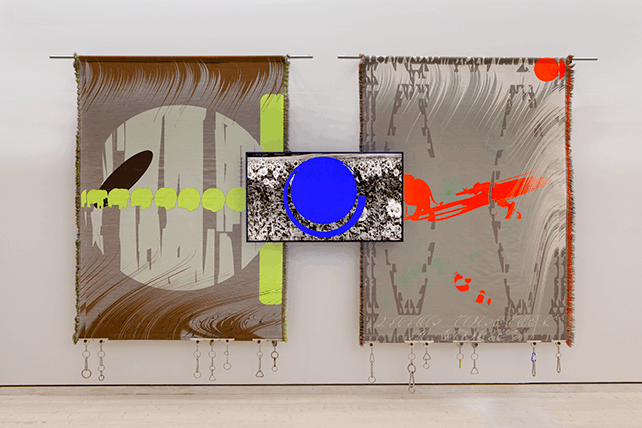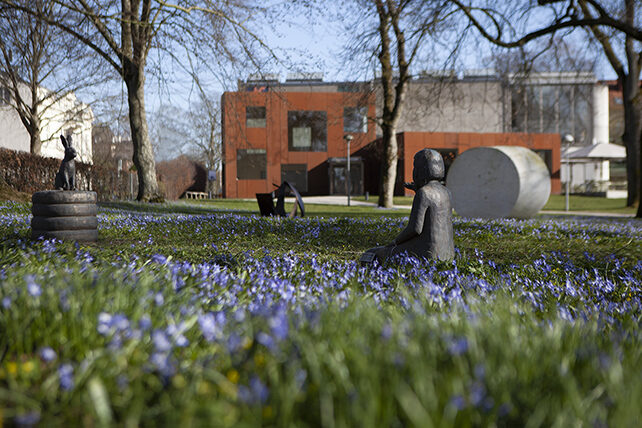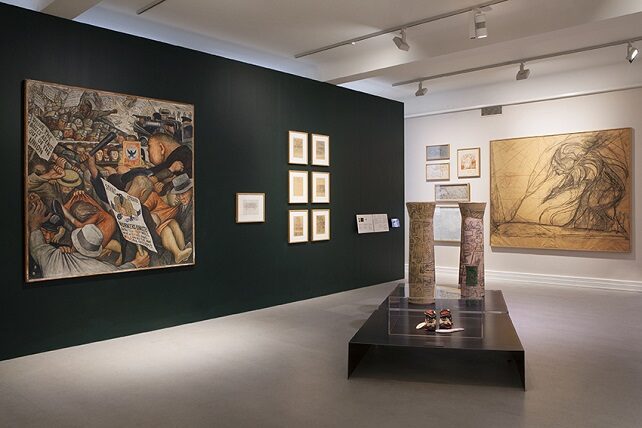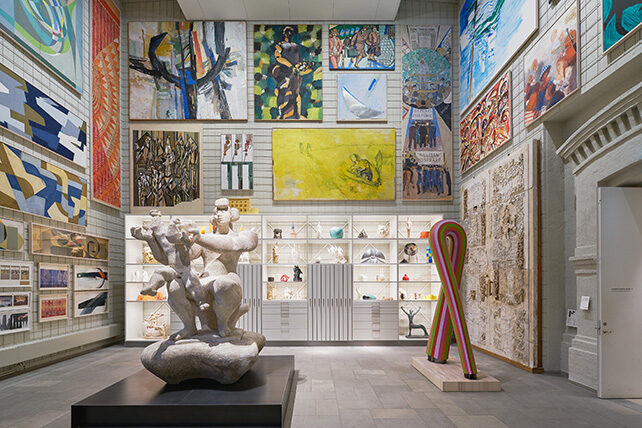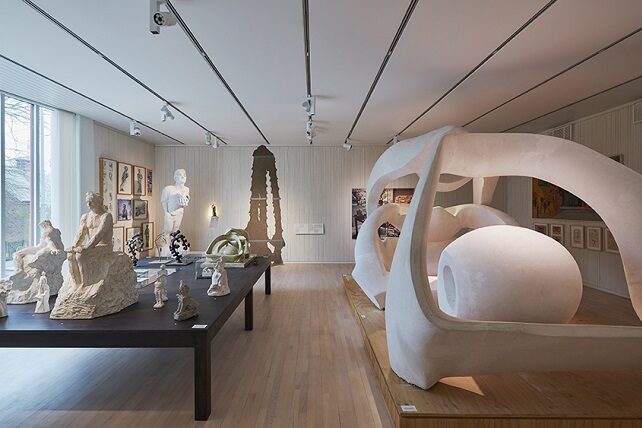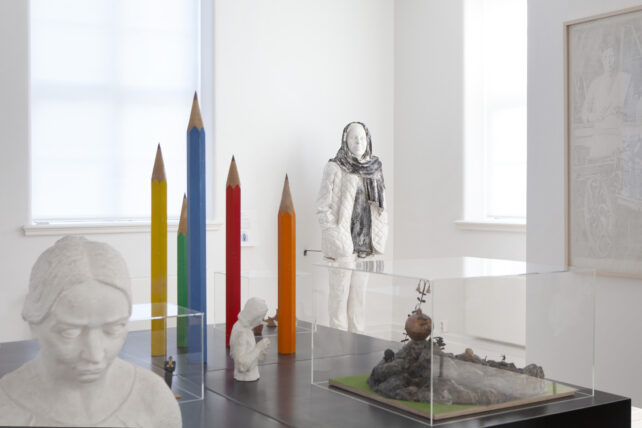- Open today 11–19
- Open today 11–19
Exhibitions
Featured & upcoming
Coded Threads
The exhibition follows threads from the origin of the digital, the woven fabric, into today’s and tomorrow’s digital reality. The exhibition brings together three artists who work with coded threads in their art in completely different ways.
Always at the museum
The Sculpture Park
You can enjoy the art in The Sculpture Park whenever you want to. The park features international and Swedish art created for the space as well as replicas of works which are displayed elsewhere.
The International Gallery
The International Gallery presents a selection of permanent and temporary projects from the end of the 1800s until today. Here you can discover unique sketches by artists such as Henri Matisse, Sonia Delaunay, Jenny Holzer and Fernand Léger.
The Mexican Collection
The museum has one of Europe's foremost collections of sketches by Mexican monumental painters such as Diego Rivera and David Alfaro Siqueiros.
The Swedish Gallery
In The Swedish Gallery, you can take part of sketches for public works of art in Sweden from the first years of the 20th century until today. Works by Sigrid Hjertén, Isaac Grünewald and Siri Derkert and contemporary artists such as Linn Fernström, Carolina Falkholt and Matthias van Arkel are shown here.
The Birth of the Work of Art
Sketches provide an insight into the artistic process, how ideas are explored and how works of art take shape. Here you can follow several artists in their process, from inspiration and early idea to finished work.
Memory and Monuments
Which people and events are represented in our shared spaces and which narratives have been left out? These rooms contain sketches and models for monuments, memorials and memorial sites from the early 1900s to the present day.

